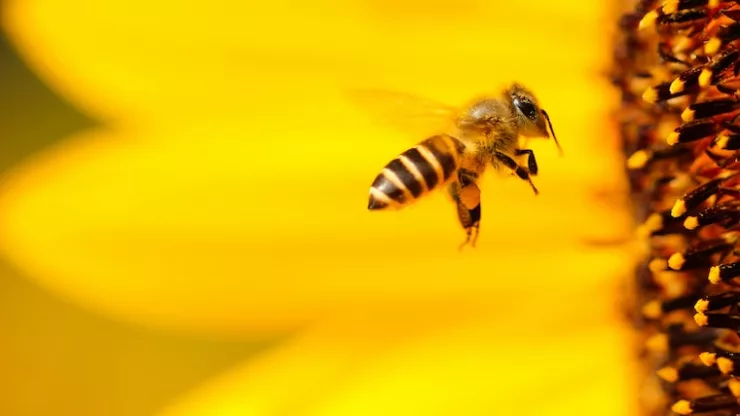Have you ever wondered what kind of fish live in the rivers and streams that flow through our cities?
Many people assume that city waterways are too polluted to support any kind of aquatic life, but that’s not always the case.
Urban fish can be found in many cities around the world, and studying these fish can tell us a lot about the health of our environment.
Jump to Section
Urban Fish: Exploring Aquatic Life in City Waterways
Introduction
Urban fish are fish that live in rivers, creeks, and other waterways that flow through cities.
These fish have adapted to survive in polluted water and can often be found in surprising places.
Studying urban fish is important because it can give us insight into the health of our environment and help us understand how human activity affects aquatic ecosystems.
History of Urban Fish
How did urban fish end up in city waterways? Many urban fish populations are the result of intentional or accidental introductions.
For example, people may have introduced fish to a waterway for recreational fishing, or fish may have escaped from aquaculture facilities.
In some cases, fish may have migrated into urban waterways from nearby natural habitats.
However, human activity has had a significant impact on urban fish populations. Pollution, habitat destruction, and changes to water flow can all harm fish populations.
Types of Urban Fish
There are many different types of urban fish found in city waterways.
Some of the most common species include:
- Carp
- Catfish
- Sunfish
- Bass
- Trout
- Perch
Identifying urban fish species can be challenging, but there are several characteristics that can help.
For example, carp have a distinctive barbel on their upper lip, while catfish have long whiskers (called “whisker pads”) on their faces.
Adaptations of Urban Fish
Urban fish have had to adapt to survive in waterways that are often heavily polluted. Some of these adaptations include:
- Increased tolerance for pollutants
- Changes in feeding behavior
- Changes in reproductive strategies
- Changes in growth rates
Genetics also play a role in the adaptation of urban fish populations.
Over time, fish with genetic variations that allow them to survive in polluted waterways may become more common.
The Health of Urban Fish Populations
The health of urban fish populations can tell us a lot about the health of the environment.
Pollution, habitat destruction, and changes to water flow can all harm fish populations.
Monitoring the health of urban fish populations can help us identify environmental problems early on and take action to address them.
Studying Urban Fish
There are many techniques used to study urban fish populations, including:
- Electrofishing: using an electric current to stun fish so they can be counted and measured
- Fish surveys: using nets or traps to catch fish and identify them
- Water quality testing: measuring the amount of pollutants and other chemicals in the water
Citizen science can also play an important role in urban fish research.
Volunteers can help collect data on fish populations and water quality, providing valuable information for scientists and policymakers.
Urban Fish and Human Health
While many urban fish are safe to eat, some fish may contain high levels of pollutants that can be harmful to human health.
It’s important to monitor urban fish for potential health risks and to be aware of fish advisories in your area.
The Future of Urban Fish
As cities continue to grow and develop, the health of urban fish populations will become increasingly important.
There are many things we can do to improve the health of urban waterways, including:
- Reducing pollution
- Restoring habitat
- Improving water flow
By taking action to protect our aquatic environments, we can help ensure that urban fish populations continue to thrive.
Understanding and Protecting Urban Fish in City Waterways
In conclusion, urban fish are a fascinating and important part of our aquatic ecosystems.
Studying these fish can help us understand the impacts of human activity on the environment and identify ways to protect our waterways.
By working together to reduce pollution, restore habitat, and improve water flow, we can help ensure that urban fish populations continue to thrive for generations to come.
FAQ
What is an urban fish?
An urban fish is a fish that lives in a river, creek, or other waterway that flows through a city.
What types of fish can be found in urban waterways?
Common types of urban fish include carp, catfish, sunfish, bass, trout, and perch.
How have urban fish adapted to survive in polluted waterways?
Urban fish have adapted in many ways, including increased tolerance for pollutants, changes in feeding behavior, changes in reproductive strategies, and changes in growth rates.
What can we do to protect urban fish populations?
Reducing pollution, restoring habitat, and improving water flow can all help protect urban fish populations.
Citizen science can also play an important role in monitoring and protecting these fish.
I’m a nature enthusiast and creator of Metro Wilds and have spent years exploring the great outdoors.
With a passion for environmental conservation and sustainability, I have dedicated my career to writing about the beauty and wonders of nature, as well as the threats facing our planet.
Contact me at [email protected] for assistance.





